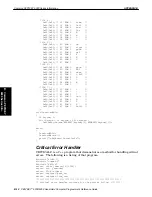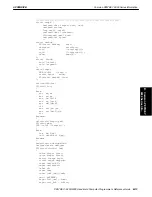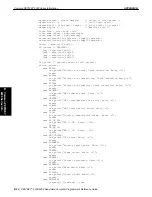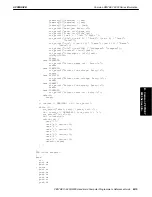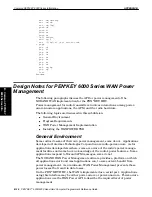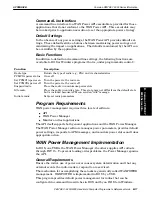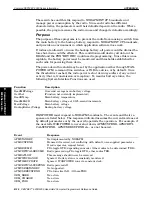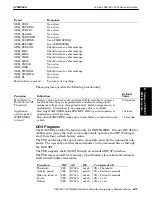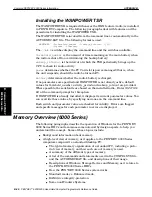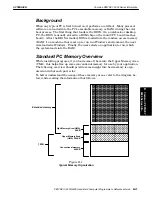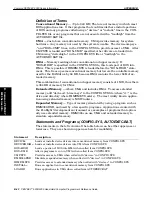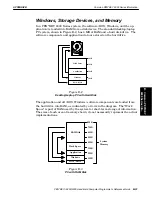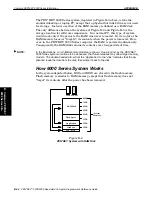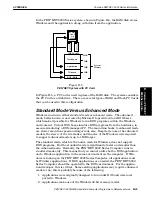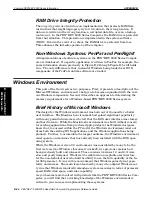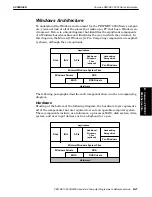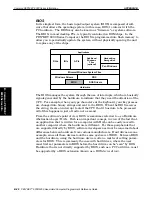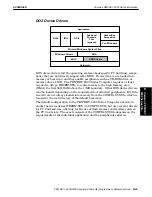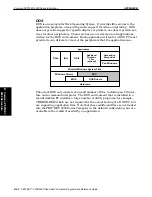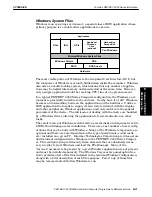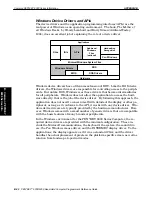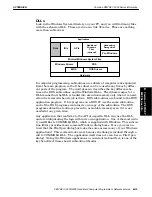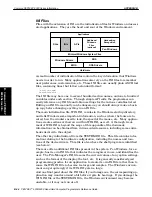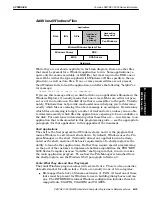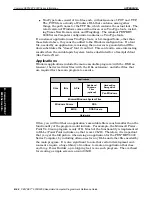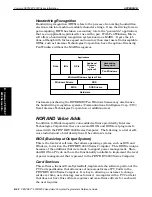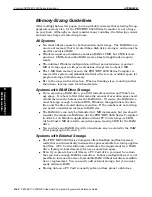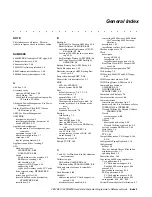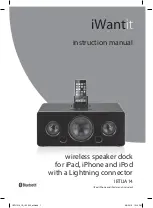
APPENDIX B
Common PEN*KEY 6000 Series Information
B-26 PEN*KEY
R
6200/6300 Hand-Held Computer Programmer’s Reference Guide
RAM Drive Integrity-Protection
The
integrityĆprotection
feature is an implementation that protects RAM from
instructions that might improperly try to write data to the wrong location. If
data were written to the wrong location, a corrupted data file, or even a lockup,
could occur. In the PEN*KEY 6000 Series Computer, the RAM drive is protected
from that situation. This protection is implemented in the system software
(BIOS). Even in the event of a reboot, the RAM drive is protected from loss.
This enhances the failĆsafe operation of the computer.
Non-Windows Systems: PenPal and PenRight!
All implementations of software systems on the PEN*KEY 6000 Series ComputĆ
ers are diskĆbased. If a specific application is written in PenPal, for example, the
same information shown previously in Figure BĆ2 through Figure BĆ5 still holds
true. The only difference is that, instead of Windows being loaded over DOS,
components of the PenPal runtime software are loaded.
Windows Environment
This part of the
Guide
serves two purposes. First, it presents a description of the
Microsoft Windows environment to help you to become acquainted with the variĆ
ous Windows components. Second, it describes an approach to determining the
memory requirements for a WindowsĆbased PEN*KEY 6000 Series system.
Brief History of Microsoft Windows
The design for the Windows environment was born out of the need for a better
user interface. The Macintosh environment had gained significant popularity
with many potential customers who felt that the DOS user interface was clumsy
and hard to learn. While the Macintosh environment was built without concern
for existing applications from previous Apple products, the Windows designers
knew that, to succeed within the PC world, the Windows environment must adĆ
dress both the existing DOS applications and the Windows applications being
planned. Further, to accumulate the largest audience, the Windows environment
must operate on machines that have already been installed with the DOS operĆ
ating system.
While the Windows version 3.0 environment was considered by many to be the
first
real
version of Windows (because it worked!), two previous versions had
been previously built and released. These versions (versions 1.0 and 2.0) were
slow and poorly designed. Windows 3.0 combined an acceptable user interface
for the nonĆtechnical user who had the ability to use the full capability of the InĆ
tel 386 processor. It was in this environment that Windows gained great popuĆ
larity and success. The main lesson learned by many who adopted Windows earĆ
ly was that Windows required tremendous system resources in terms of processor
speed, RAM, disk space, and video capability.
As you become more involved with products like the PEN*KEY 6000 Series ComĆ
puter, you will find that a working knowledge of the Windows environment is
critical to your success in implementing these systems.
B. Common PEN*KEY
6000 Series Info.

